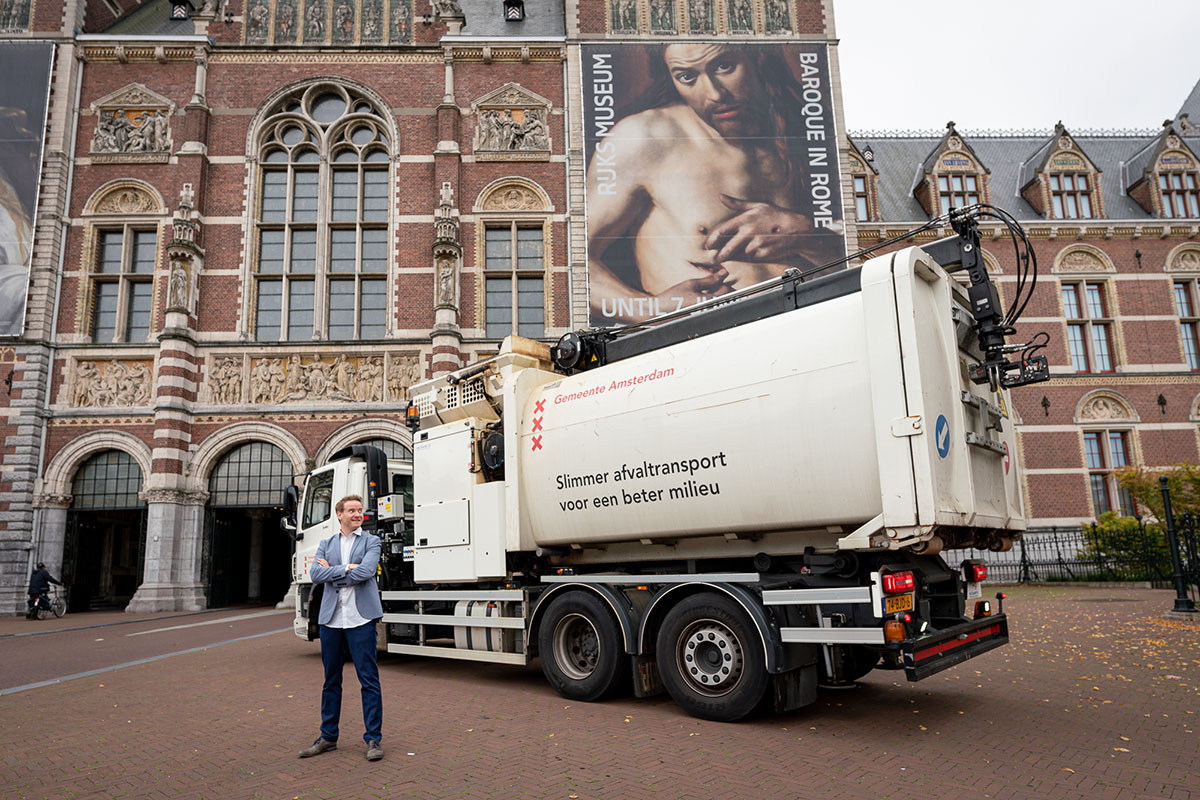Want to read more stories about Sioux Technologies? Download our digital magazine below.
Source MagazineAmsterdam takes a significant leap forward in the efficiency of its waste collection. A consortium of 3 companies, including Sioux Technologies, has developed a dynamic solution for this. Amsterdam wants to reduce the driving movement of garbage trucks through the city and prevent overcrowded waste containers. This will allow them to improve their service towards residents, reduce costs and operate in a more sustainable manner.
Senior Mathware Engineer Stijn Fleuren explains how mathematics makes all the difference here.
How did Amsterdam come across Sioux?
‘Through a tender process for a research and development contract. We offered the best solution together with Total Waste Systems and 21south. Our mathematical competences are crucial to its development.’
Why?
‘Garbage collection vehicles now drive the same routes at set times. But the actual situation is dynamic. Not all waste containers fill up at the same rate. Volumes also change over time because of demographic and other developments.’
You always want to empty containers when they are almost full…
‘Especially not afterwards; everyone wants the city to be clean. Physical sensors can provide a picture of the fill level, but they are expensive. Sioux developed a virtual sensor: a model that accurately predicts how fast containers fill up, using data like their weight when they are collected. Both of these are being used now.’
What happens to the information from that model?
‘It serves as input for an algorithm that generates routes. Amsterdam is a big city and has thousands of containers. In which order should they be emptied and how do you allocate that work to vehicles and people? Those questions need to be answered every night, taking into account practical limitations like traffic rules and variable accessibility. In mathematics, we call this a large-scale optimization problem. In addition, this predictive model can be used for simulations that support strategic decision-making, e.g. regarding the purchase of additional vehicles or processing locations.’
Can you use this solution for other markets as well?
‘This form of mathematics – operations research – is suitable for tackling all kinds of planning issues. Examples are determining the ideal positioning of chips on a PCB or route optimization for AGVs in warehouses.’
How far along is the project in Amsterdam now?
‘The system was tested in the first half of 2020, including a practical test. The results are positive. It could lead to savings of several million euros per year. Our solution is now gradually being rolled out.’
How unique is this project?
‘As far as I know, there is nothing like it in terms of the combination of sensor technology, mathematical modelling, vehicle telematics, navigation and planning. Furthermore, only minor modifications are needed to make our solution applicable in any city. It therefore has global market potential.’
More info
Watch the webinar: Data Technologies for Process Optimization, that Sioux and the City of Amsterdam hosted.
